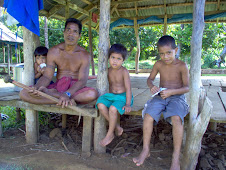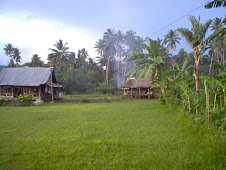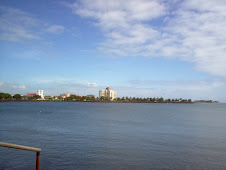Thursday, December 31, 2009
HAWAI'I CALLS
Gardenias' fragrances float in the tropical air.
Breezes sigh in the ironwood trees.
Spring moon is shining full.
Frogs call and crickets chirp.
As the moon pulls on the tides tonight
Drawing them closer to her,
I feel Hawai'i tugging on my soul,
Drawing me closer to her.
Islands of gentle showers and soft green,
Pahoehoe and a'a,
Mountains soaring, rivers roaring,
Forests of rain, and deep waters.
I need to be comforted by your softness,
Challenged by your rugged solitude,
And nestled in your warm bosom,
Renewed and held in the spell of your tropical nights.
Friday, December 25, 2009
Back to the Islands
On January 7th I'll finally be settling in back on the Big Island of Hawaii. I miss the island life and am getting anxious to be back. I hope to travel to Samoa in the spring.
Manuia le Kirisimasi, Mele Kalikimaka, Merry, Merry Christmas to all!
Manuia le Kirisimasi, Mele Kalikimaka, Merry, Merry Christmas to all!
Life Goes On
It’s been nearly three months since the tsunami in Samoa. The immediate crisis is past. Houses and lives are being rebuilt. Here’s the email I recently received from my Samoan family:
Dear Donna,
Sorry for delaying in replying your Email. Kids are very happy with
their gifts. We also very happy and would like to thank you very much
indeed for all this you have done for us. Hemara is very like to write to you.
Regarding Tsunami, We are now starting to plan for a new house at the
roadside. I am trying to get some money loan from the Bank to add on the
assistance given by the government, then probably starting the
construction work by next month.
Best regards from Saina, Hemara, Tia and Fetu
Tofa Soifua
Lesaisaea Niualuga
When a Peace Corps volunteer in Samoa is assigned to a village, it’s the responsibility of the village to provide a place for the volunteer to live. I had initially been told, as I had requested, that I would have a place by myself. I was dismayed to learn just a few days before I went to Poutasi that I would be living with a family in the village.
As a group of 16 volunteers we had gone through training together for three months. Then we were taken to our individual villages. I vividly remember that day when we arrived in Poutasi and I was introduced to my Samoan family. Then the Peace Corps vehicle drove away and there I was. In a strange house, with people I didn’t know. I don’t know that I’ve ever felt so alone.
But sometimes we don’t know what’s best for us. When it was time to come back to the States the next year, it was so hard to leave my Samoan family. We hugged and kissed and cried together. I know for a fact that my experience there was enriched immensely by having been a part of this family.
In Samoa, as in all of Polynesia, if you are related by blood (even the remotest cousin), or by adoption (formal or otherwise), or by marriage, or by simply being welcomed into the family, you are family, now and forever.
I lived in Poutasi with Lesaisaea Niualuga Evaimalo, his wife, Saina, and their children. Saina’s father, Tuatagaloa Te’o Fetu, was high chief of Poutasi and the Falealili District (12 villages on the southern coast of the Island of Upolu) for decades. When he passed away in the 1990’s, the family chose a new matai (chief), Joe Annandale, who then became Tuatagaloa Joe Annandale. The Annandale ancestor came to Samoa from Scotland, and in 1873 married a Samoan princess, the niece of King Malietoa.
In Samoa there is what is known as “customary land.” Every Samoan family has a swath of land that runs from the sea to the mountain which has been their family’s land for hundreds of years. They don’t have title to it; they can’t sell it or lease it. It’s the family land. Usually several households live on the family land in individual houses. One family in Poutasi had over 50 family members living together in different houses, including the 80-year-old matriarch of the family and her children and their children and their children.
As I said, Saina’s father was the Tuatagaloa high chief for many years. After her father’s death, her mother moved to Apia to live with family there. Saina married Niu and they now live in the family house in Poutasi where I stayed. Tuatagaloa Joe, the current high chief, and his wife Tui lived in their house next door.
Saina and Niu's have six children. Three of them lived with us in Poutasi. Their oldest daughter is grown with a family of her own. Son Stephen is attending high school in California and lives with family there, and daughter Aileen lived with her aunt and uncle in Apia. Throughout Polynesia children are commonly entrusted to relatives. In America we associate foster parenting or adoption with something gone wrong. In Samoa it's like a redistribution of children, to those with no children, or to a family who might be able to provide more ample means of support. These transfers of children aren’t absolute, and although the fosterage may last for years, they don’t permanently separate the children from their biological parents, who have a deep and lasting commitment to their children. It’s hard for us to understand, and likewise, the thought that we have orphanages is appalling to Samoans.
(Aileen is now attending Alabama State University in Montgomery on scholarship and I was able to spend some time with her when visiting my son in Atlanta for Thanksgiving.)
The younger children in our family, Hemara, Tia, and Fetu, lived with us in Poutasi. Hemara and Tia, attended St. Mary’s Primary School, a private school in Apia. Hemara turned 11 soon after I got there and is now 13. She and I became especially close. Youngest son, Fetu, has a learning disability (Saina has diabetes, which was diagnosed during her pregnancy with Fetu, and such high risk pregnancies often result in developmental delay, learning difficulties and ADHD). When I first came to the village, Fetu, at age 7, was not attending school at all. They had tried to send him to the local school, but teachers in Samoan village schools don't have the training to deal with such a situation. I encouraged and worked with Saina, and we were able about one year later to get Fetu into a private school in Apia, where he would get the extra help he needed. It’s very fortunate that the family has the resources to send the children to private schools. If not, Fetu would just not have gone to school.
My Samoan family is wealthy by Samoan standards. Saina’s family owns a bakery, small grocery store, and restaurant in Apia. Saina works at the store. Niu was originally from another village. (In Samoa you don’t marry someone from your own village.) He got his Bachelor’s degree from the University of the South Pacific in Fiji in Environmental Science. When I first arrived in the village, Niu was in charge of the National Park in Samoa. While I was there he got a promotion and he is now head of Waste Management for the Ministry of Natural Resources and Environment. Joe and Tui owned Sinalei (http://www.sinalei.ws/), a small resort a few miles away, which was a real treat for me to visit occasionally. (Both the Ministry and the resort have internet access so we can continue to keep in touch via email.)
Because of the wealth and the status of my Samoan family, I felt kind of guilty at first that my life was cushier and more comfortable than most of the other Peace Corps volunteers in country. But after a time, I realized that this was my Peace Corps experience, and other volunteers would have a different experience, and that was okay.
And of course it’s all still relative. We lived in one of the nicest houses in the village. But we still had no hot water, and cold water intermittently. The family did most of the cooking over an open fire in the cookhouse out back, since we had only a one-burner propane cook top in the house, and no stove. We had a refrigerator when I first moved there, but it died about three months before I left and hadn’t been replaced yet. The laundry was done either at the sink, which was outside next to the house, or in buckets in the shower stall.
Well, I digress. My Samoan family is doing well under the circumstances. Joe is recovering from his injuries and plans to repair and reopen Sinalei by April 2010. Tui will be missed forever, but Joe has a lot of family support. I talked to Niu and Saina by telephone several days after the tsunami. Their new house will be located on family land away from the ocean front and along the government road slightly higher in elevation. The children are doing well. Saina said that Hemara was angry because she had written a letter to me which hadn’t yet been mailed, and it was washed away.
I haven’t worked out the details yet, but I am continuing to plan to raise some money to reopen the homework center/computer center. I was so pleased that they had kept it going after I left, and even added another room for a quiet study area and library. If I could raise enough money (probably about $2,000 to do repairs and replace the computers), I’d like to go back for a few weeks next spring or summer and set it up again. I’m waiting to hear back from Joe and Niu about the structural integrity of the church hall. The computer center was in the back of the building; the front was badly damaged. There is one other building in the village that is a possible location, but it would need much more repair.
Geography Postscript
After the tsunami I had questions from a number of you about the size of the Samoan Islands. Here’s a bit of information about Samoa and American Samoa. The eastern group of islands, the territory of American Samoa, has a population of about 55,000. The total land area of American Samoa is 77 square miles made up of seven very small islands. The largest island (Tutuila) has a land area of 57 square miles. It also has a large natural harbor (Pago Pago), which is why the United States wanted it for a naval re-fueling station.
Forty-miles away is the independent country of Samoa (formerly known as Western Samoa) with a total population of about 188,000 and a total land area of 1,133 square miles. Comparatively, the area occupied by Samoa is slightly smaller than the State of Rhode Island. There are four inhabited islands. I lived on the Island of Upolu which is 430 square miles. It’s the most populated island and second largest island, 47 miles long and 15 miles wide. There is one city on the island, Apia (pop. 61,900), which is really an agglomeration of small villages. Seventy percent of the population lives in small villages on the coast.
Dear Donna,
Sorry for delaying in replying your Email. Kids are very happy with
their gifts. We also very happy and would like to thank you very much
indeed for all this you have done for us. Hemara is very like to write to you.
Regarding Tsunami, We are now starting to plan for a new house at the
roadside. I am trying to get some money loan from the Bank to add on the
assistance given by the government, then probably starting the
construction work by next month.
Best regards from Saina, Hemara, Tia and Fetu
Tofa Soifua
Lesaisaea Niualuga
When a Peace Corps volunteer in Samoa is assigned to a village, it’s the responsibility of the village to provide a place for the volunteer to live. I had initially been told, as I had requested, that I would have a place by myself. I was dismayed to learn just a few days before I went to Poutasi that I would be living with a family in the village.
As a group of 16 volunteers we had gone through training together for three months. Then we were taken to our individual villages. I vividly remember that day when we arrived in Poutasi and I was introduced to my Samoan family. Then the Peace Corps vehicle drove away and there I was. In a strange house, with people I didn’t know. I don’t know that I’ve ever felt so alone.
But sometimes we don’t know what’s best for us. When it was time to come back to the States the next year, it was so hard to leave my Samoan family. We hugged and kissed and cried together. I know for a fact that my experience there was enriched immensely by having been a part of this family.
In Samoa, as in all of Polynesia, if you are related by blood (even the remotest cousin), or by adoption (formal or otherwise), or by marriage, or by simply being welcomed into the family, you are family, now and forever.
I lived in Poutasi with Lesaisaea Niualuga Evaimalo, his wife, Saina, and their children. Saina’s father, Tuatagaloa Te’o Fetu, was high chief of Poutasi and the Falealili District (12 villages on the southern coast of the Island of Upolu) for decades. When he passed away in the 1990’s, the family chose a new matai (chief), Joe Annandale, who then became Tuatagaloa Joe Annandale. The Annandale ancestor came to Samoa from Scotland, and in 1873 married a Samoan princess, the niece of King Malietoa.
In Samoa there is what is known as “customary land.” Every Samoan family has a swath of land that runs from the sea to the mountain which has been their family’s land for hundreds of years. They don’t have title to it; they can’t sell it or lease it. It’s the family land. Usually several households live on the family land in individual houses. One family in Poutasi had over 50 family members living together in different houses, including the 80-year-old matriarch of the family and her children and their children and their children.
As I said, Saina’s father was the Tuatagaloa high chief for many years. After her father’s death, her mother moved to Apia to live with family there. Saina married Niu and they now live in the family house in Poutasi where I stayed. Tuatagaloa Joe, the current high chief, and his wife Tui lived in their house next door.
Saina and Niu's have six children. Three of them lived with us in Poutasi. Their oldest daughter is grown with a family of her own. Son Stephen is attending high school in California and lives with family there, and daughter Aileen lived with her aunt and uncle in Apia. Throughout Polynesia children are commonly entrusted to relatives. In America we associate foster parenting or adoption with something gone wrong. In Samoa it's like a redistribution of children, to those with no children, or to a family who might be able to provide more ample means of support. These transfers of children aren’t absolute, and although the fosterage may last for years, they don’t permanently separate the children from their biological parents, who have a deep and lasting commitment to their children. It’s hard for us to understand, and likewise, the thought that we have orphanages is appalling to Samoans.
(Aileen is now attending Alabama State University in Montgomery on scholarship and I was able to spend some time with her when visiting my son in Atlanta for Thanksgiving.)
The younger children in our family, Hemara, Tia, and Fetu, lived with us in Poutasi. Hemara and Tia, attended St. Mary’s Primary School, a private school in Apia. Hemara turned 11 soon after I got there and is now 13. She and I became especially close. Youngest son, Fetu, has a learning disability (Saina has diabetes, which was diagnosed during her pregnancy with Fetu, and such high risk pregnancies often result in developmental delay, learning difficulties and ADHD). When I first came to the village, Fetu, at age 7, was not attending school at all. They had tried to send him to the local school, but teachers in Samoan village schools don't have the training to deal with such a situation. I encouraged and worked with Saina, and we were able about one year later to get Fetu into a private school in Apia, where he would get the extra help he needed. It’s very fortunate that the family has the resources to send the children to private schools. If not, Fetu would just not have gone to school.
My Samoan family is wealthy by Samoan standards. Saina’s family owns a bakery, small grocery store, and restaurant in Apia. Saina works at the store. Niu was originally from another village. (In Samoa you don’t marry someone from your own village.) He got his Bachelor’s degree from the University of the South Pacific in Fiji in Environmental Science. When I first arrived in the village, Niu was in charge of the National Park in Samoa. While I was there he got a promotion and he is now head of Waste Management for the Ministry of Natural Resources and Environment. Joe and Tui owned Sinalei (http://www.sinalei.ws/), a small resort a few miles away, which was a real treat for me to visit occasionally. (Both the Ministry and the resort have internet access so we can continue to keep in touch via email.)
Because of the wealth and the status of my Samoan family, I felt kind of guilty at first that my life was cushier and more comfortable than most of the other Peace Corps volunteers in country. But after a time, I realized that this was my Peace Corps experience, and other volunteers would have a different experience, and that was okay.
And of course it’s all still relative. We lived in one of the nicest houses in the village. But we still had no hot water, and cold water intermittently. The family did most of the cooking over an open fire in the cookhouse out back, since we had only a one-burner propane cook top in the house, and no stove. We had a refrigerator when I first moved there, but it died about three months before I left and hadn’t been replaced yet. The laundry was done either at the sink, which was outside next to the house, or in buckets in the shower stall.
Well, I digress. My Samoan family is doing well under the circumstances. Joe is recovering from his injuries and plans to repair and reopen Sinalei by April 2010. Tui will be missed forever, but Joe has a lot of family support. I talked to Niu and Saina by telephone several days after the tsunami. Their new house will be located on family land away from the ocean front and along the government road slightly higher in elevation. The children are doing well. Saina said that Hemara was angry because she had written a letter to me which hadn’t yet been mailed, and it was washed away.
I haven’t worked out the details yet, but I am continuing to plan to raise some money to reopen the homework center/computer center. I was so pleased that they had kept it going after I left, and even added another room for a quiet study area and library. If I could raise enough money (probably about $2,000 to do repairs and replace the computers), I’d like to go back for a few weeks next spring or summer and set it up again. I’m waiting to hear back from Joe and Niu about the structural integrity of the church hall. The computer center was in the back of the building; the front was badly damaged. There is one other building in the village that is a possible location, but it would need much more repair.
Geography Postscript
After the tsunami I had questions from a number of you about the size of the Samoan Islands. Here’s a bit of information about Samoa and American Samoa. The eastern group of islands, the territory of American Samoa, has a population of about 55,000. The total land area of American Samoa is 77 square miles made up of seven very small islands. The largest island (Tutuila) has a land area of 57 square miles. It also has a large natural harbor (Pago Pago), which is why the United States wanted it for a naval re-fueling station.
Forty-miles away is the independent country of Samoa (formerly known as Western Samoa) with a total population of about 188,000 and a total land area of 1,133 square miles. Comparatively, the area occupied by Samoa is slightly smaller than the State of Rhode Island. There are four inhabited islands. I lived on the Island of Upolu which is 430 square miles. It’s the most populated island and second largest island, 47 miles long and 15 miles wide. There is one city on the island, Apia (pop. 61,900), which is really an agglomeration of small villages. Seventy percent of the population lives in small villages on the coast.
Subscribe to:
Comments (Atom)
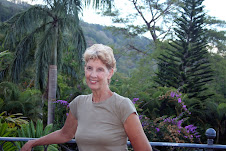


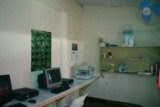
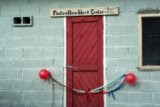
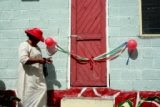
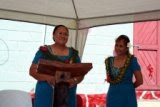
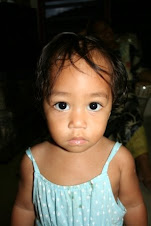
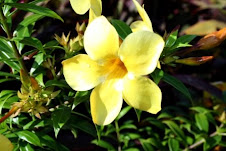
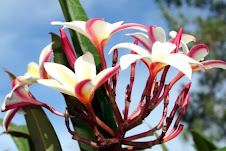
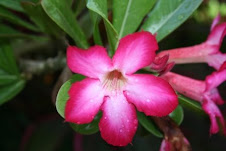

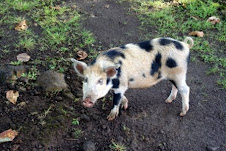

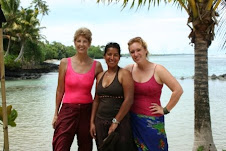

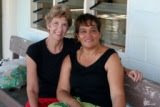

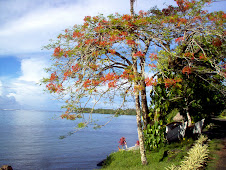
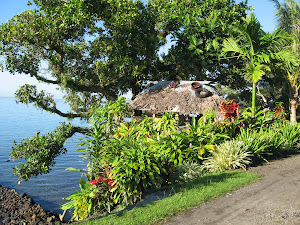
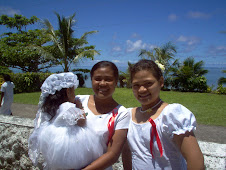
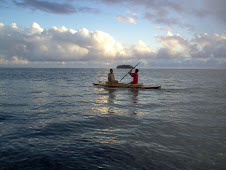

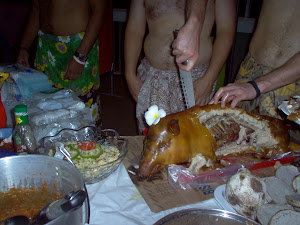
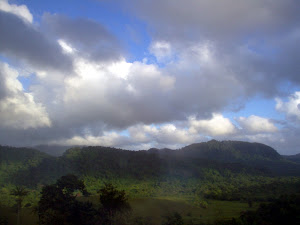
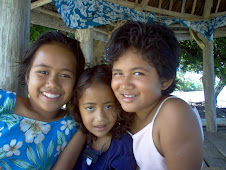.jpg)
